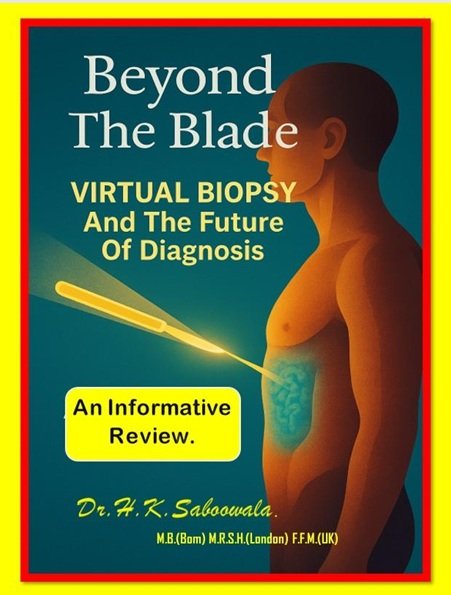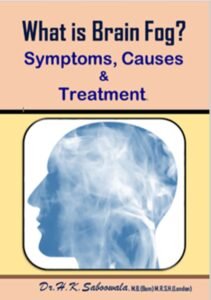For Medical Professionals, Researchers and Curious Minds.
An Insightful Overview by Dr. H.K. Saboowala
M.B., B.S. (Bom), M.R.S.H. (London), F.F.M. (UK)
A Paradigm Shift in Diagnosis
Virtual biopsy is reshaping the future of diagnostics. By combining advanced imaging with AI, it offers non-invasive alternatives to traditional biopsies, enabling safer and faster disease detection.
For decades, the scalpel has represented the gateway to a definitive diagnosis. From cancer screenings to organ evaluation, conventional biopsies—though powerful—have always come with a trade-off: invasiveness, patient discomfort, and clinical risks.
But today, we stand at the dawn of a new diagnostic approach that could change everything.
Virtual biopsy is not a future dream — it’s an emerging reality.
What Exactly Is a Virtual Biopsy?
At its core, a virtual biopsy is a non-invasive diagnostic method that uses advanced imaging techniques and AI algorithms to analyze tissue characteristics without needing to cut or extract a sample.
By leveraging tools such as:
- MRI
- CT and PET scans
- Radiomics
- Molecular imaging
- and machine learning
Clinicians can decode invisible patterns from within the human body — often as accurately (or even more so) than traditional histopathology.
Rethinking How We See Inside the Body
In this carefully researched review, I explore the latest breakthroughs where virtual biopsy is transforming clinical practice:
In Neurology:
Early detection of degenerative changes like Alzheimer’s and MS with minimal patient risk.
In Cardiology:
Assessment of coronary plaques using non-invasive CT-based imaging.
In Oncology:
AI-assisted scans to characterize tumors and guide treatment — before a scalpel is even considered.
In Hepatology:
Staging liver fibrosis using MR elastography rather than needle biopsies.
This digital transformation marries diagnostic clarity with patient safety — aligning perfectly with the ideals of personalized, predictive medicine.
Why Virtual Biopsy Matters
Virtual biopsies offer clinicians and patients:
✔️ No physical incision
✔️ Repeatable diagnostics
✔️ Reduced complication risks
✔️ Faster turnaround times
✔️ AI-enhanced accuracy
✔️ Minimized sampling error
It’s a step toward diagnosing disease with minimal harm and maximum insight.
Dive Deeper with the Full eBook
This blog highlights key ideas from my newly published medical eBook:
Beyond The Blade: VIRTUAL BIOPSY and the Future of Diagnosis”
Available at:https://drhakimemedivault.com
Inside, you’ll discover:
- Clear breakdowns of the imaging tools driving this shift
- Real-world clinical applications
- Illustrated explanations of tissue analytics
- Future potentials of AI in pathology
- Ethical insights and patient-focused discussion
The Future Is Painless
We’re entering a new age of medicine — one where insight comes from light and data, not blood and scalpels. Virtual biopsies represent more than just a medical advancement — they’re a vision of care that is safer, smarter, and more humane.

Beyond The Blade: VIRTUAL BIOPSY and the Future of Diagnosis
”Explore more at drhakimemedivault.com

QR code for “More Books “Link to purchase on GOOGLE PLAY BOOKS.
Review
This review on virtual biopsy is an enlightening and timely exploration of how non-invasive imaging technologies are reshaping diagnostic medicine. As a clinician, I appreciate how the text balances scientific depth with accessibility, offering insights into cutting-edge techniques like multiparametric MRI, liquid biopsy markers, and AI-enhanced imaging. The concept of diagnosing without incisions is no longer futuristic — it’s rapidly becoming a clinical reality. This publication is an invaluable resource for physicians, radiologists, and pathology professionals navigating this diagnostic evolution.”
– Dr. Sameer Kulkarni, MD
Thank You Note
A heartfelt thank you to all readers — including neurologists, researchers, students, and inquisitive minds — who continue to support this series of educational medical reviews. Your encouragement drives the mission to make complex science both understandable and clinically relevant.
– Dr. Hakim K. Saboowala.




